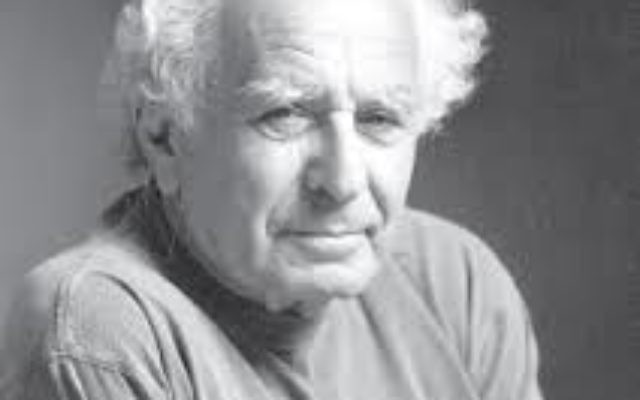Totalitarianism and the True Believers of 2016
By Eugen Schoenfeld
“Gene, will you tell us your story?”
I have heard this and similar requests most of my life in the United States. I told my story — my involvement in the Holocaust — for the first time on a Friday evening in the fall of 1948 at the Hillel house at Washington University.
I didn’t like the experience. I didn’t like re-experiencing the events that have caused and continue to cause me an untold amount of pain.
Moreover, I didn’t like to be on display as one of those persons — a displaced person — one of those unfortunate survivors who lost family and home who therefore should be pitied.
I also hated to respond to an often-asked question: What did you do to merit survival?
So I limited the telling of my tale to a few occasions. But I soon became aware that I have a duty to share my experiences with others.
Why? Because I realized that the rise of undemocratic forces in this country could lead to rule by anti-democratic and anti-intellectual forces and that this nation could be led astray from democracy to totalitarianism.
Hence, I felt obliged to become the bearer of sad news, to become, in a small way, the Jeremiah of our time. I began when I recalled my personal experiences to issue a cautionary statement: “Ladies and gentlemen, be careful and vigilant.”
I would start my elucidation of the Holocaust by telling the audience: “I came to tell you that in spite of our commitment to democracy and justice, nonetheless we, the people of the United States, could become subject to authoritarian dictators. We are not immune to the effects of true believers.”
In 1948 as a 23-year-old college freshman, I came face to face with a would-be American dictator, the authoritarian demagogue Sen. Joe McCarthy of Wisconsin, as well as with members of the House Un-American Activities Committee and their rejection of reason and their desire to eliminate freedom of inquiry, the true foundation of American democracy.
I felt obliged to try to shout, “Do not destroy this precious commodity called freedom and justice.”
I wanted Americans to face the danger: the spread of lies and the perception of an enemy in everyone whose ideas vary from the majority — the precious few who dare to take a dialectic stance.
I felt the need to spread the idea that if we are not diligent and cautious, the anti-democratic forces could wreak havoc with our democratic social system and the associated freedoms.
Despite my reluctance this fall to watch the debates between the two candidates for the U.S. presidency, some force pulled me to the television. There it was again: the ugly head of anti-democratic people still peddling the venom of anti-intellectualism and the anti-moralist, laissez faire individualism advocated by Herbert Spenser.
We must, however, understand that technological changes, which can be seen as a boon for productivity and the means by which we achieve a better quality of life, can become the source of change associated with the fear of future.
Technology not only changes the material conditions in our life, but it also changes our belief system. It changes the old moral system into new values. It changes our sacredly held views and faith in G-d and our belief in how to face the future. It brings us into a new world and a more uncertain future.
On one hand, technological development and associated change can be a boon for society; on the other hand, these changes are associated with new and altered beliefs and expectations. In short, change is a destabilizing force.
At such times when we are forced to give up our belief that we can control the future and must face uncertainty, there is a simultaneous rise in mass movements that in many ways seek to pull us back to a sacred past.
Technological changes, by which we conquer the natural world and produce goods and services necessary for maintaining life, constantly demand the acquisition of new skills. Older people in the labor force who are unable to acquire these skills become useless and unemployable, creating new classes of poverty.
The rate at which technology changes unfortunately grows exponentially. The more we change, the greater is the speed at which subsequent changes follow.
Because of the rapidity of change, the rate at which people lose their usefulness in the productive system is also rapid, leading to a swift increase in social and economic misfits and thus to mass movements of true believers.
Who are these “true believers”?
Most often, they hate the present, perceiving it as vile and worthless. They idealize the past and seek to re-create its glory.
They blame minorities for the changes. Minorities are seen as dangerous interlopers and destroyers of the sacred past and its culture.
True believers glorify “true Americans” and decry the loss of the purity of the founding ancestors. They blame immigrants and foreigners for ruining this beautiful and sacred nation and society.
This point of view is not new; it has existed in this nation in the form of many nativist movements, such as the Know-Nothing Party before the Civil War, the Klan of the early 20th century and the anti-Communist movement after World War II.
The danger is that the true believers and those who have authoritarian personalities also have an affinity for charismatic leaders who emphasize that truth is achieved not through reason, but through emotion.
In the present election, such people constitute the core of the Trump movement — the 39 percent of voters who could become just as dangerous to the United States as Hitler’s true believers did to Germany.





comments